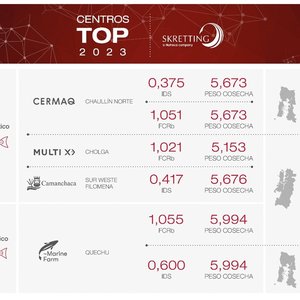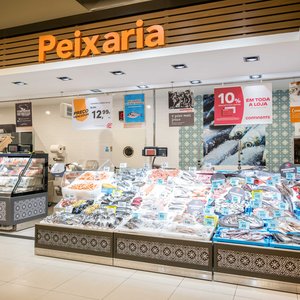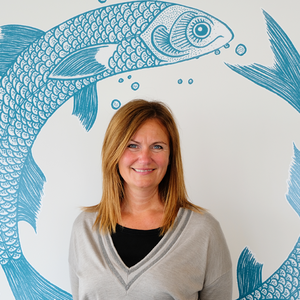Clean Human-Grade products based on clean feed ingredients
The feed ingredient for the future: South Antarctic Krill Meal [Euphausia superba, Dana]
By Mr. Dimitri Sclabos and Mr. Raul Toro
Krill meal is a specialty feed ingredient, which has been produced by the industry for more than 15 years from whole round krill, yet it is still in the growth phase of the product life cycle curve. (Dimitri Sclabos, www.Aquafeed.com June 2003.) Although there are more than 80 different krill species around the globe, resource abundance and high value dried krill meals have been mainly produced from South Antarctic Krill [Euphausia superba, Dana].
South Antarctic Krill has unique nutritional and quality attributes, which makes it the feed ingredient of the future. No matter that it has been in the market for some time already, only in the past few years a serious effort has been made to position this product within the high value aquaculture feeds market niche. This trend is possible due to feed formulators acceptance of krill meal’s uniqueness through its good protein content, its strong palatability effect, natural beta-carotene content [in the form of astaxanthine], its excellent lipids & minerals profile and its chitin & chitosan constituent.
Nevertheless, it is krill meals’ negligible amount of dioxins, PCB’s and heavy metals, the main feature that makes it an irreplaceable feed ingredient.
Krill meal is an excellent nutritional source of protein in an average of 60% [58-65% dry basis] of the highest biological value. Krill meal’s typical average amino acid profile is as follows; Alanine 5.8% [percent of protein] - Arginine 6.7% - Aspartic Acid 9.5% - Cisteine 1.2% - Glutamic Acid 12.6% - Glycine 4.8% - Histidine 2.5% - Isoleucine 5.0% - Leucine 7.8% - Lysine 8.2% - Methionine 4.0% - Phenylalanine 5.2% - Proline 4.0% - Serine 4.5% - Threonine 4.7% - Tyrosine 4.5% - Valine 5.3% - Taurine 2.9%. (Tepual S.A. & Mr. Raul Toro, independent report 1994)
Regarding krill meal’s palatability attribute, it has low molecular weight soluble compounds such as nucleotides, amino acids in the form of proline and glycine, glucosamine, and high levels of trimethyl amine oxide, TMAO (190 MgN/100 g sample). All these compounds act together as an effective attractant and flavoring agent. (Allahpichay and Shimizu 1984; Storbakken, 1988; Shimizu, et al., 1990; Ogle and Beaugz, 1991). Krill meal has been successfully used in low palatability aqua-diets such as feeds containing vegetable proteins and/or antibiotics. Additionally, krill meal high TMAO content has an extra osmoregulatory contribution, useful to reduce salmon’s physiological stress when they are transferred from fresh to seawater. (Finne, G., 1992)
South Antarctic krill meal’s natural pigment content [in the form of Astaxanthin] is a very well known attribute. It has an average content of 180ppm [132-250ppm] dry basis, depending mainly on processing plus resource and fishing grounds conditions. This feature is used to increase flesh pigmentation on salmon, trout, yellow tail, shrimp and other farmed species. (Storebakken 1988; Storebakken et al. 1987; Torrissen et al., 1989). Krill meals used this way, the resulting end product contains the same type and coloring agent as naturally fed wild caught salmon. This characteristic has proved a strong selling argument for feed manufacturers focused on natural or organic conscious buyers.
Indeed, studies suggest that astaxanthin play a fundamental role in the protection against active oxygen species in fish and other organisms (Shimidzu et al., 1996).
Beta-carotene astaxanthin found in krill meal has an important role in the regulation of fish’ immune system, besides its role as a pigmentation agent, enhancing disease resistance and boosting survival rates. It is also known as an essential fish growth regulator. (Christiansen et al., 1994; J. Torrissen, 1984)
Krill meal steroidal component located in krill’s cephalotorax region has proved a powerful and efficient promoting agent in the use of the protein found in feed diets. It therefore acts as a good growth promoting agent, increasing weight gain and feed conversion rates (Allahpichay and Shimizu, 1985)
Krill meal chitin content found on raw krill’s caparison has an average content of 2-4% of chitin. This way, krill meal is being studied as an immune system stimulant for some fish species. (Siwicki et al., 1994).
Regarding minerals’ and their use on several biological functions, South Antarctic krill meal is a good source of bio-available minerals; Copper 101ppm (dried meal), Selenium 12ppm, Zinc 72ppm, Calcium 1.7% (dried meal), Phosphorous 1.3%. (Tepual S.A. & Mr. Raul Toro, independent reports 1994). Copper’s high content plays an important role in fin and skin integrity, while high concentration of selenium plays a relevant part on cellular antioxidant systems (Barrows, F and Lellis, W, 1997)
Krill meal has an additional relevant feature, which is its fat content uniqueness, in an average of 15% (8 – 18%), depending mainly on the fishing season and processing particulars. Within the traditional krill meal-processing layout, around 70% of raw krill original fat content remains bonded to krill meal’s protein. This fat contains a high Omega-3 fatty acid concentration, where EPA & DHA are found in the vicinity of 23% or even higher (as part of the lipids). This fat has also a high content of phospholipids (40-50% of lipids). Accordingly, fish fed with diets containing krill meals increase their natural Omega 3 and natural astaxanthin content allowing this fish to enter the highly lucrative natural food market niche.
In a study on the effect of dietary lipid level on muscle composition in Atlantic salmon, it was found that muscle fatty acid composition reflected dietary fatty acid profiles, containing similar percentages of total saturated, monoenic and n-3 fatty acids in fish from all dietary treatment groups (Hemre & Sandnes, 1999).
Krill meal is added in aquaculture feed diets in a range of 1 to 8% (Dimitri Sclabos unpublished report 2001). Feeds containing krill meal are either used only at pre-harvest period or throughout the whole rearing & growth phase, depending on diet’s main purpose (flesh pigmentation or attractant for example). Markets for these feeds include shrimp, trout and salmon feed manufacturers.
The best krill meals are a result of raw material processed on board factory trawlers within the first 5 hours after the krill has been caught. This allows the highest freshness expressed as a very low TVN value in the range of 5 – 20 (mgN/100g). (Mr. Raul Toro, independent report 1999-2003, unpublished data)
Probably krill meal’s future will not be purely link to nutritional aspects, but also on food safety issues. Krill meal raw material comes from South Antarctic waters with a very low content of risky contaminants such as Dioxins, PCB’s and heavy metals.
Krill Meal shows a remarkably low content of undesirable substances such as heavy metals and dioxins, closely related to the unpolluted waters where it is captured and processed (Dimitri Sclabos & Raul Toro Aquafeed report June 2003; Dimitri Sclabos & Raul Toro Intrafish & Fis.com report June 2003). South Antarctic krill fishing grounds has its own natural barriers such as sea current activity, circumpolar atmospheric winds and a limited human intervention. Industrial contamination is at a minimum level - if any. Heavy metals found in this area come primarily from volcanic activity, the main estimated pollutant source for Antarctic marine species (Knox, 1970; Beckman, 1992).
Rather sooner than later, EU’s Commission on Undesirable Substances will place such low import allowance levels on Dioxins, Furans and PCB’s likes, that many of the actual feed ingredients will not make it as a safe ingredient. Other markets surely will follow this trend. This will not be the case for krill meals. Additionally, as krill meal adds invaluable natural pigments, white tablecloth restaurants will be in a much better position to serve natural-like food to environment-concerned customers.
Arsenic (As) comes from volcanic sources and it is a natural element found in water, soil and air. In marine species it mainly comes on its organic [80-99%] non-toxic form. Arsenic inorganic form is found in an amount of less than 0,01ppm As/Kg wet weight while fish have 1-10ppm of As/kg wet weight. The EU regulation states 10ppm total Arsenic content for feeding stuffs from fish or other marine animals. In whole krill, Arsenic level reaches 3 ppm As/Kg (Deheyn, D. et al , 2000).
Cadmium (Cd) and Lead (Pb) come from volcanic activity and human contamination through wastewater, fertilizers and air pollution. Lead comes from industrial contaminants (batteries, solder, and alloys). Both metals have a low accumulation rate in fish’s flesh. (Norwegian Agricultural Inspection Service, Amended proposal, December 2000). Data for brown and white fishmeals and krill meals show that Cadmium and Lead levels fall within EU’s Directive 2002/32/EC.
Cadmium and Lead levels
Antarctic Krill Meal and Fish Meal
| Material | Antarctic krill meal Mean(ppm) n=4 | Norwegian fish meal Mean(ppm) n=15 | Feed Material EU Regulation Upper Limit |
| Cadmium | 0,1 | 0,45 | 2,0 |
| Lead | < 0,5 | 0,43 | 10,0 |
(*) Regular brown & white fishmeals have a Lead average content of 3,72ppm (IFFO 1976)
Mercury (Hg) is widely distributed in nature, found in water, soil, and air and in several organisms. In marine species, organic mercury (methyl mercury) is considered a toxic compound, thoroughly concentrated throughout the food chain. Inorganic less-toxic mercury is accumulated at lower concentrations. Methyl mercury found in fish feeds is accumulated in fish’s flesh and it is slowly eliminated. Tuna, halibut, sharks, and other predatory species accumulate higher mercury concentrations (0.5 – 1 ppm wet weight). The opposite is valid for species found at the beginning of the food chain, such as Antarctic krill that fed from plankton. It accumulates mercury at less than 0.1 ppm (wet weight).
Mercury in Antarctic krill Meal
| Krill Meal Mean(ppm) N=6 | Complete Fish Feeds Mean(ppm) n=54 | EU upper level for feed material Mean(ppm) | EU limit for complete feeds Mean(ppm) |
| < 0,05 | 0,05 | 0,5 | 0,1 |
(*) Regular brown & white fishmeals have a Mercury average content of 0,15ppm (IFFO 1976)
Krill meal mercury levels easily falls within EU regulations and are a suitable and safe feed ingredient.
Regarding Krill meal Fluorine content (F), the latest European Directive [Directive 2002/32/EC] of the Parliament and of the Council dated May 7th 2002 on Undesirable Substances in animal feed, it set a maximum Fluorine content in feeding stuffs of animal origin of 500ppm [dry basis], which included red meals in general and krill meals in particular. Fortunately the said commission amended such level to higher fluorine content. If this directive would have gone through, it could have stopped all European red meals imports since South Antarctic krill meal has an average F content of 1750ppm [dry basis]. This data (Dimitri Sclabos & Raul Toro unpublished data 1995-2003) relates to krill meal’s raw material.
While whole krill has average moisture content is 79% (trip May-June 2002), Fluorine equivalent dry basis content reaches 1,495ppm. In frozen de-shelled krill tail meat for example, with an average moisture content of 76% and 21ppm F, its equivalent F content reaches 88ppm (dry basis). On 12% moisture and 60% protein content krill meal, lipids reaches 14% while F content jumps to 2,036ppm. This pattern is similar to what it is shown on other crustacean meals such as North European Prawn meals, South East Asian shrimp shell meals and South American shrimp & langoustine meals.
Fortunately, thanks to personal work (Dimitri Sclabos & Raul Toro Aquafeed July 2003, Intrafish July 2003) and European EFAPIT & IFFO, the EU Commission on Undesirable Substances decided to amend the 500ppm limit and rise it to a 2000ppm level. (Still to be confirmed by the commission)
Dioxins
Dioxins are a group of 210 polychlorinated substances spontaneously created from industrial contamination and wastewater - mainly from cellulose plants. From these, 17 are considered toxic and these are targeted in lab analysis.
Dioxins are a serious toxic material and active at very low dosage; they accumulate in fatty tissue and are not easily eliminated, either in marine species or humans. The EU directive is set at a maximum level for fishmeals of 1.25 ng-WHO-TEQ/kg product.
Dioxin content in South Antarctic Krill Meals
Expressed as ng-WHO-TEQ/kg
| Orkney Island Jan.26-Feb.28 ‘02 | Orkney Island Mar.15-Apr.18 ‘02 | South Georgia’s Jun.22-Jul.31 ‘02 | EU max level for fish meals |
| 0,2657 (*) Fat 13,0% | 0,3259 (*) Fat 13,9% | 0,2054 (*) Fat 12,9% | 1,25 |
(*) Average value
Since Antarctic krill meals are well within EU established limits, it gives the fish feed manufacturer a greater safety margin, particularly if some of the other fish meals and oil feed ingredients used are closer to the limit.
References
Allahpichay, I. and Shimizu, C. (1985). Separation of growth promoting factors from non-muscle krill meal of Euphausia superba. Bull. Japanese Soc. Sci. Fish. 51, 945-951.
Berkman, P.A. (1992). The Antarctic Marine Ecosystem and humankind. Reviews in Aquatic Sciences 6, 295-333.
Christiansen, R. ¯.Lie, O. J. Torrissen (1994). Effect of astaxanthin and Vitamin A on growth and survival during first feeding of Atlantic salmon Salmo salar L Aquaculture and Fisheries Management 1994, 25, 903-914.
Deheyn D., Gendrau P. , Baldwin R.J. , Latz M. I. (2000). Characterization of metals contamination in the marine ecosystem of Deception Island, Antarctica. In Marine Biology Research Division, Scripps Institution of Oceanography University of California, San Diego, La Jolla, Ca, USA.
Canadian Food Inspection Agency (2002). Summary Report of Contaminant Results in Fish Feeds, Fish Meal and Fish Oil.
Finne, G. (1992). Non-protein nitrogen compounds in fish and shellfish. Advances in Sea Food Biochemistry. 393. Hemre & Sandnes (1999)Salmo salar.Aquaculture Nutrition5 (1), 9-16
Knox, G.A. (1970). Antarctic Marine Ecosystem. Antarctic Ecology Academic Press, London, pp 69 – 96.
Lellis, W. and Barrows, F. (1997). Aquaculture 156 : 229-240.
Norwegian Agricultural Inspection Service (2001). Amended proposal for a Directive on undesirable substances and products in animal nutrition. COM (2000) 861 final.
Ogle and Beaugz (1991). Food preferente of P. Vannamei. Gulf Research Reports 8 : 291-294.
Shimidzu N., Goto M., Miki W. (1996). Carotenoids as singlet oxygen quenchers in marine organisms. Fish. Sci.; 62:134-137
Shimizu, C., Ibrahim, A., Toroko, T. and Shirakawa, Y. (1990). Feeding stimulation in sea bream, Pagrus major, fed diets supplemented with Antarctic krill meals. Aquaculture 89, 43-53. Siwiki, A., Anderson, P., Rumsey, G. (1994). Dietary intake of immunostimulant by rainbow trout effects non-specific immunity and protection against furunculosis. Veterinary immunology and immunopathology. 41: 125-139.
Storebakken, T. (1988). krill as a potential feed source for salmonids. Aquaculture. 70, 193-205.
Storebakken T. Foss P. Schiedt K. Austreng E. Liaaen-Jensen S. Manz U. (1987). Carotenoids in Diets for Salmonids IV Pigmentation of Atlantic Salmon with Astaxantin, Astaxantin Dipalmitate and Canthaxantin, Aquaculture 65: 279-292
Torrissen O. J. Pigmentation of salmonids: effect of carotenoids in eggs and start-feeding diet on survival and growth rate. Aquaculture 1984; 43: 185-193
Torrissen O. J. Pigmentation of salmonids: interactions of astaxanthin and canthaxanthin on pigment deposition in rainbow trout. Aquaculture 1989; 79: 363-374
For more information contact the authors at: dimitri@sclabos.com or visit: www.sclabos.com








